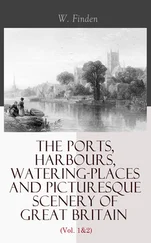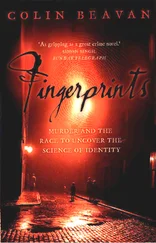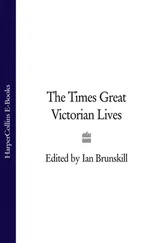CHAPTER FOURTEEN
WOMEN! HOLD YOUR TONGUES!
November-December 1860
In the first, cold days of November, the strangest inquiry yet opened at the Temperance Hall. Thomas Saunders, a barrister and magistrate of Bradford-upon-Avon, Wiltshire, had become convinced that the villagers of Road were in possession of important information about the murder, and he took it upon himself to elicit it from them. Though he was acting entirely on his own initiative, his status as a Wiltshire magistrate gave him an apparent authority, and no one at first challenged his right to investigate the case.
From 3 November onwards, Saunders summoned an array of local people to offer their thoughts and observations, some of it illuminating about the life of the village and of Road Hill House, but nearly all of it utterly irrelevant to the murder. This was the stuff that Whicher had sifted through during his fortnight in Road, the huge bank of rumour and peripheral detail that a police investigation threw up, and that usually never reached the public. Saunders aired these bits and bobs in a distinctly haphazard fashion: 'evidence, if evidence it may be called, was adduced in a most singular and undignified manner', said the Bristol Daily Post. 'On several occasions those present were at no pains to conceal the laughter which the proceedings were calculated to give rise to, and all throughout they seemed to consider that the whole affair was got up for their special amusement, rather than for the elucidation of a mysterious and terrible crime.'
The next two weeks in Road resembled a comic interlude in a tragic play, with Saunders as the buffoon who stumbled onstage to mangle and misunderstand all that had preceded him. He opened and closed the proceedings at whim, forgot the witnesses' names and puffed himself up with mysterious allusions to 'the secrets within my breast', while wandering in and out of the Temperance Hall with a bottle of liquid that according to the Bristol Daily Post 'had very much the appearance of brandy'. Saunders said it was medicine to treat a cold he had caught from a window draught on the premises (he castigated the hall's caretaker, Charles Stokes, for the poor insulation). The magistrate gulped at his potion during the proceedings, and nibbled on biscuits. He frequently interrupted his witnesses by issuing demands that squalling babies be removed from the hall or women silenced: 'Women! Hold your tongues!'
A typical witness was Mrs Quance, an old lady who lived in the cottages by Road Hill House. On Tuesday Saunders examined her about a rumour that she had said that her husband, who worked in the mill at Tellisford, saw Samuel Kent in a field at 5 a.m. on 30 June. She flatly denied it, complaining that the police had already questioned her on the matter.
'I think it is done too clever to be found out,' she added, 'except one of the party "peaches" [informs on another].'
'What has been too cleverly done?' asked Saunders.
'The child-murder.' Then Mrs Quance abruptly rose, shuffled about, said, 'Oh, Lord, I can't stay yer, my boiler's a-goin all the while,' and scampered out, to appreciative hoots from the onlookers.
James Fricker, the plumber and glazier, testified to having been pestered to fix Samuel Kent's lantern in the last week of June: 'It did not strike me at first that there was anything singular in this particular hurry for the lamp in the summer time, but it has since.'
Before Saunders opened his inquiry he had snooped around Road for a few days, and he now reported his observations to the court. One evening, he said, he and a police officer saw a young lady dressed in black, with a white petticoat, heading for Road Hill House. She paused at the gate, walked past it a little way, turned back and went in. A few minutes later Saunders saw a young lady, possibly the same one, combing her hair at an upstairs window. His account of this unremarkable incident drew complaints from the Kent family, and later in the week he apologised, acknowledging that the 'slight trepidation' the lady had shown may have been prompted by her awareness of the 'two strange persons who were watching her movements'. Someone in the audience called out that the young woman was Mary Ann.
The last witness examined by Saunders was Charles Lansdowne, a labourer, 'the pith of whose statement', observed the Frome Times, drily, 'was that he had seen nothing, had heard nothing, and knew nothing, about what had been done at Road Hill House, on the night of 29th June'.
The newspapermen who had been covering the case since July were flabbergasted by Saunders' inquiry. The reporter from the Morning Star , astounded at the 'absurd proceedings' of the 'crackbrained boggler', said he was caught between 'wonder at [Saunders'] audacity and contempt for his folly'. The Bristol Mercury described the magistrate as 'monomaniacal'. Saunders was an unintentional satirist, a caricature of the amateur detective who saw meaning in every banality, every trivial circumstance, who believed that he alone could unravel a mystery that had foxed the professionals. He felt a right to spy, a duty to speculate. He had a keen 'sense of the profound importance of immaterial statements', noticed the Somerset and Wilts Journal , and paid great respect to the letters he received from the public: 'each contains hints of great importance'. He read out several of these letters in court, including one from a fellow barrister who observed: 'You are an ill-conditioned meddling vain old idiot.'
Yet this inquiry uncovered one significant fact. A letter from James Watts, a police sergeant of Frome, prompted Saunders to examine several officers about a discovery the police had made at Road Hill House on the day of the murder, and then concealed. In the Temperance Hall on Thursday, 8 November, he questioned PC Alfred Urch on the matter, and on Friday he took evidence from Sergeant James Watts and Superintendent Foley.
At about five p.m. on 30 June, the audience heard, Watts had found a woman's shift, wrapped in newspaper, in the kitchen boiler hole, the fire-hole beneath the hotplate. Urch and PC Dallimore saw it too: 'It was dry, sir,' said Urch to Saunders, 'but very dirty . . . as if it had been worn a long time . . . It had some blood about it . . . I did not touch it myself. Sergeant Watts unfolded it, looked at it, and carried it to the coach house.' Was it coarse or fine, Saunders asked. 'I should think, sir, it was one of the servants' . . . We remarked, two or three of us who were there, that it was a small one.'
A shift was a linen garment worn under a dress in the day, or by itself at night. It could fall to the knee, the shin or the ankle; its sleeves were usually short, and its style plain. A nightdress was typically a fuller garment that reached to the floor, with sleeves to the wrists, strips of lace or embroidery at the collar, cuffs or hem. There was a borderland, where a shift and a simple nightdress might be confused. It was at least possible that the item in the boiler hole was the missing nightdress.
'Was it a night-shift or a day-shift?' Saunders asked Urch, to laughter from the audience.
'Well, sir, it was a shift.'
'Have you a sufficient knowledge of shifts?' At this the onlookers howled with merriment. 'Silence!' cried Saunders. 'Silence!'
Watts examined the shift in the coach house. It was 'very bloody', he said. 'It was dry then, but I should not think the stains had been on it a long time . . . Some of the blood was on the front and some on the back. I wrapped up the shift again, and as I was coming out I saw Mr Kent just outside the stable-door in the yard. He asked me what I had found, and said he must have it seen, and that Dr Parsons must see it. I did not let Mr Kent see it, but handed it over to Mr Foley.'
Читать дальше












